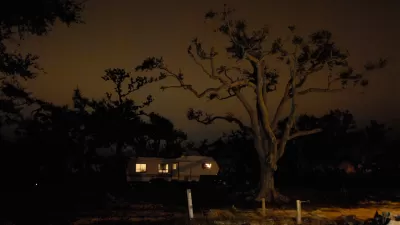"Buyers value the dollar per square foot, and the builder responds by delivering as many square feet of conditioned space as possible for $X. If he can deliver 100 more square feet than the competition, most buyers think it's a better value." -Ron Jones, Green Builder Magazine, in The Washington Post.
"Buyers value the dollar per square foot, and the builder responds by
delivering as many square feet of conditioned space as possible for $X.
If he can deliver 100 more square feet than the competition, most
buyers think it's a better value."
-Ron Jones, Green Builder Magazine, in The Washington Post.
That was then (2007), this is now. As housing prices hit bottom, there's a general sense that home building can't go back to business as usual when the market recovers. And one of the first things that will have to change is the idea that square footage is the sole arbiter of value. As The Christian Science Monitor reported in January, the "McMansion Trend In Housing Is Slowing."
The question becomes, how can we build efficient, smaller homes that people will find value in? I'll be exploring that issue with some excellent panelists at CNU 17 this Friday, as we discuss "Smart, Sustainable and Economical: Homes for the New Era." Marianne Cusato has been exploring this idea since developing a Katrina Cottage in the wake of the hurricane. If you attended our recent webinar with Marianne, you know that she is passionate about returning housing to a more realistic, affordable, and well-designed form. In preparing for the panel, I've been impressed with Marianne's ability to tackle all the issues, from sustainability to density and around to value and quality.
Steve Mouzon and Andrés Duany don't need much introduction, as both have been highly prominent in the practice of New Urbanism since its inception. Through the New Urban Guild, Steve is now working on a refinement of the idea they're calling a "SmartDwelling." Here's what Steve has to say about the panel:
My part of this session will focus on the New Urban Guild's
SmartDwelling Project. SmartDwelling I was just featured along with
three other designs on the cover of the Wall Street Journal's special
section on sustainability. SmartDwellings are substantially smaller
than yesterday's bloated McMansions, but they live large, largely in
part due to what the Guild is calling Smaller & Smarter Principles.
SmartDwellings are also highly sustainable on several counts,
calibrating their sustainability to each region of the country.
I hope you'll get a chance to join us this Friday at 4:15pm at CNU17 in Denver. As a Planetizen reader, I'd like to give you the opportunity to let me know what you think we should ask this august panel. Send your questions to me at [email protected].

Planetizen Federal Action Tracker
A weekly monitor of how Trump’s orders and actions are impacting planners and planning in America.

Restaurant Patios Were a Pandemic Win — Why Were They so Hard to Keep?
Social distancing requirements and changes in travel patterns prompted cities to pilot new uses for street and sidewalk space. Then it got complicated.

Maui's Vacation Rental Debate Turns Ugly
Verbal attacks, misinformation campaigns and fistfights plague a high-stakes debate to convert thousands of vacation rentals into long-term housing.

In California Battle of Housing vs. Environment, Housing Just Won
A new state law significantly limits the power of CEQA, an environmental review law that served as a powerful tool for blocking new development.

Boulder Eliminates Parking Minimums Citywide
Officials estimate the cost of building a single underground parking space at up to $100,000.

Orange County, Florida Adopts Largest US “Sprawl Repair” Code
The ‘Orange Code’ seeks to rectify decades of sprawl-inducing, car-oriented development.
Urban Design for Planners 1: Software Tools
This six-course series explores essential urban design concepts using open source software and equips planners with the tools they need to participate fully in the urban design process.
Planning for Universal Design
Learn the tools for implementing Universal Design in planning regulations.
Heyer Gruel & Associates PA
JM Goldson LLC
Custer County Colorado
City of Camden Redevelopment Agency
City of Astoria
Transportation Research & Education Center (TREC) at Portland State University
Jefferson Parish Government
Camden Redevelopment Agency
City of Claremont





























